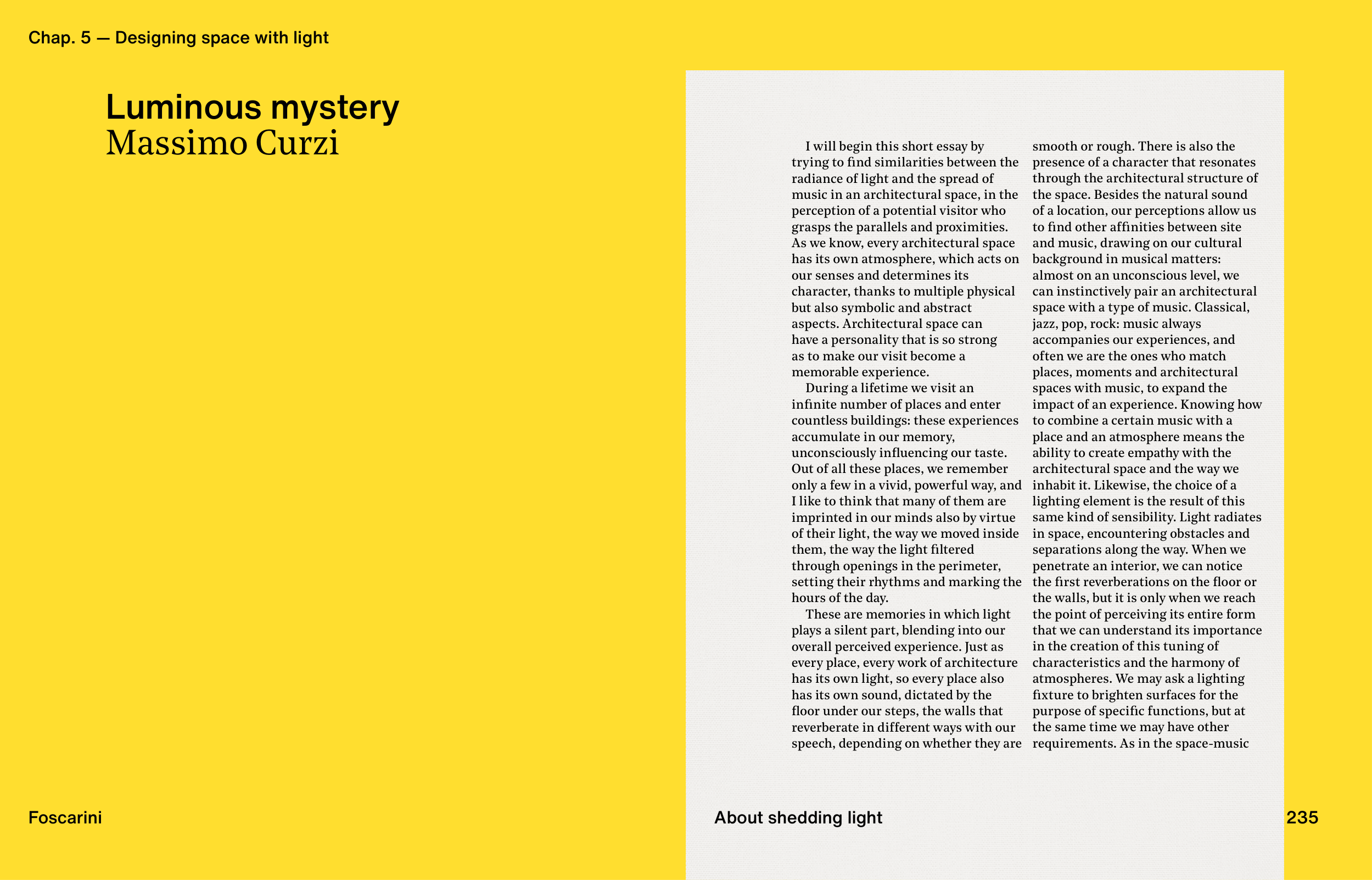235
Foscarini
Luminous mystery
Massimo Curzi
Chap. 5 — Designing space with light
I will begin this short essay by
trying to fi nd similarities between the
radiance of light and the spread of
music in an architectural space, in the
perception of a potential visitor who
grasps the parallels and proximities.
As we know, every architectural space
has its own atmosphere, which acts on
our senses and determines its
character, thanks to multiple physical
but also symbolic and abstract
aspects. Architectural space can
have a personality that is so strong
as to make our visit become a
memorable experience.
During a lifetime we visit an
infi nite number of places and enter
countless buildings: these experiences
accumulate in our memory,
unconsciously infl uencing our taste.
Out of all these places, we remember
only a few in a vivid, powerful way, and
I like to think that many of them are
imprinted in our minds also by virtue
of their light, the way we moved inside
them, the way the light fi ltered
through openings in the perimeter,
setting their rhythms and marking the
hours of the day.
These are memories in which light
plays a silent part, blending into our
overall perceived experience. Just as
every place, every work of architecture
has its own light, so every place also
has its own sound, dictated by the
fl oor under our steps, the walls that
reverberate in different ways with our
speech, depending on whether they are
smooth or rough. There is also the
presence of a character that resonates
through the architectural structure of
the space. Besides the natural sound
of a location, our perceptions allow us
to fi nd other affi nities between site
and music, drawing on our cultural
background in musical matters:
almost on an unconscious level, we
can instinctively pair an architectural
space with a type of music. Classical,
jazz, pop, rock: music always
accompanies our experiences, and
often we are the ones who match
places, moments and architectural
spaces with music, to expand the
impact of an experience. Knowing how
to combine a certain music with a
place and an atmosphere means the
ability to create empathy with the
architectural space and the way we
inhabit it. Likewise, the choice of a
lighting element is the result of this
same kind of sensibility. Light radiates
in space, encountering obstacles and
separations along the way. When we
penetrate an interior, we can notice
the fi rst reverberations on the fl oor or
the walls, but it is only when we reach
the point of perceiving its entire form
that we can understand its importance
in the creation of this tuning of
characteristics and the harmony of
atmospheres. We may ask a lighting
fi xture to brighten surfaces for the
purpose of specifi c functions, but at
the same time we may have other
requirements. As in the space-music
About shedding light
235


